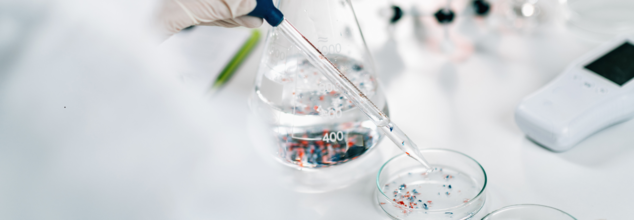
(Credit-Canva)
Researchers Have Found A Growing Threat Living In The Human Brain
Plastic containers, packets and boxes are a very common find everywhere. A few years ago there was quite an uproar from people who realized how bad it was for the environment as well as us. What many people did not know at that time was that these plastic objects could be causing harm not just to the earth but also small particles from the containers themselves could be entering our bodies and causing harm from the inside. The fear of microplastics entering our bodies caused many people to purge their homes of plastic cutting board, cups, bottles and even containers for glass and microfiber objects. While the discourse surrounding these things died down a new study has revealed something truly scary and could be a major issue for us soon.
According to a study published in the Journal Nature, tiny bits of plastic are getting into our brains, and new research shows it's getting worse. A new study found way more plastic in brains from 2024 than in brains from just eight years earlier. This is a big worry because we don't know what this plastic is doing to us. Scientists are concerned about the long-term effects of this plastic buildup, including potential damage to brain cells, inflammation, and even an increased risk of neurological disorders. The fact that plastic is accumulating in our brains raises serious questions about the safety of our current reliance on plastic products.
What Does Plastic in Brains Mean?
The study found about 50% more plastic in brains from 2024 compared to brains from 2016. That's like having a whole plastic spoon's worth of plastic in your brain, which is a lot! This big increase makes scientists very concerned about what it means for our health down the road. This rapid accumulation suggests that our exposure to microplastics is increasing significantly, likely due to the rising production and use of plastics globally. Researchers are now trying to understand how this plastic affects brain function and if it contributes to cognitive decline or other health issues.
Experts think plastic gets into our brains through our blood.They think the plastic might stick to the fats we eat and then travel to the brain, which really likes fats. Once the plastic is in the brain, we don't know if our bodies can get rid of it. This is a big question that scientists are trying to answer. Another possible pathway is through the air we breathe, as microplastics are present in dust and air pollution. These tiny particles could be inhaled and then travel to the brain through the olfactory nerve.
People With Dementia Had More Plastic In Their Brains
The study also found that people with dementia had way more plastic in their brains, three to five times more than people without dementia. Doctors think this might be because the brain's defenses are weaker in people with dementia, letting more plastic in. This makes scientists wonder if there's a connection between plastic in the brain and brain diseases.
What Does The Plastic Do?
We find these tiny plastic bits, called microplastics, in lots of our organs, like our lungs and heart. But we still don't really know what they do to us. Scientists are especially worried about the even tinier bits, called nanoplastics, because they might be able to get into our bodies more easily. These tiny plastics can carry harmful chemicals, and that could be really bad for our health. These chemicals, often added to plastics to make them flexible or durable, can leach out and potentially disrupt our endocrine system or cause other health problems. The combined effect of the physical presence of microplastics and the chemical burden they carry is a major concern for researchers.
Could We Avoid This?
Even though plastic is everywhere, there are some things you can do to try to avoid it. Don't heat food in plastic containers. Use glass or metal containers instead. Use a reusable water bottle instead of buying bottled water. Bring your own bags to the store. And try to eat less processed food, which often comes in lots of plastic. These small steps can help you reduce the amount of plastic you're exposed to.
© 2024 Bennett, Coleman & Company Limited

